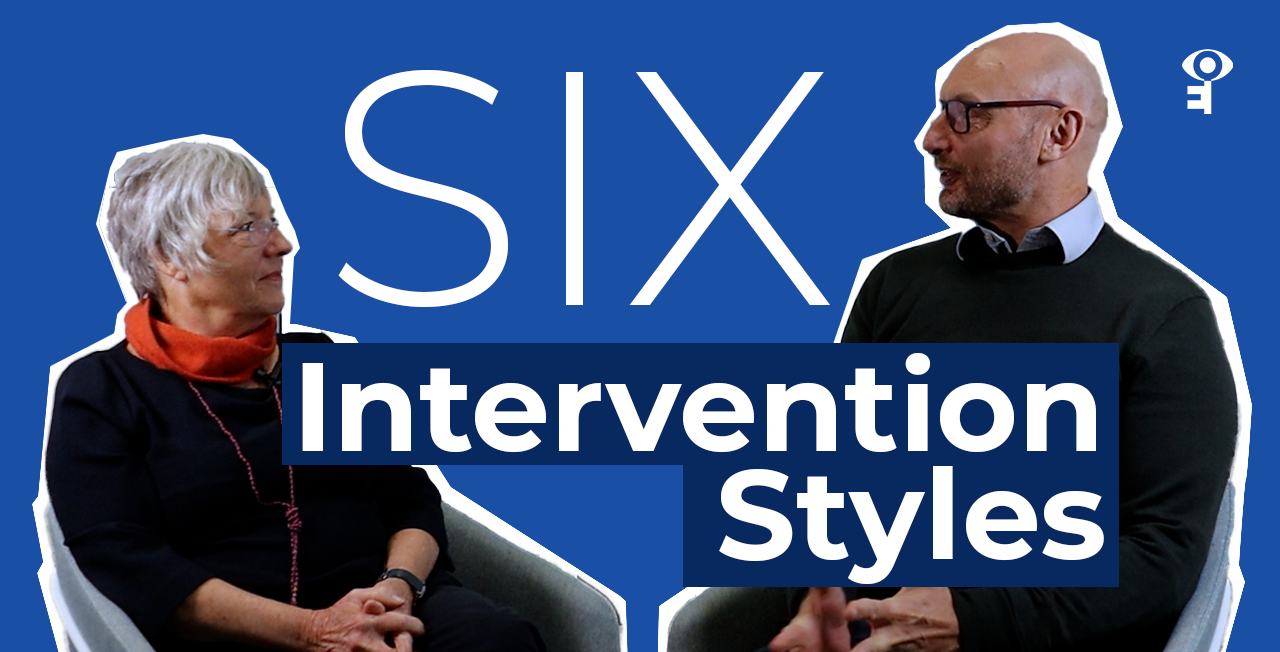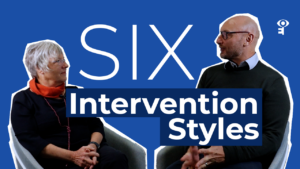Intervention Styles – An Introduction
Introduction
Facilitation often requires intervention – addressing actions, behaviours, or comments that arise within a group. While individual approaches vary, a structured framework can empower facilitators to choose the most impactful interventions. This framework not only expands your intervention repertoire but also helps identify and overcome personal biases.
This article will give an introduction into John Heron’s framework and provide an overview of the six distinct intervention styles. There will be some tips for maximising the impact of your interventions, ensuring they truly enable and empower the group.
John Heron’s Framework
The framework has evolved into a tool for understanding group dynamics and effective facilitation – there are six foundational styles that Heron established during his work at the University of Surrey.
These styles offer a simple yet insightful way to analyse your current facilitation approach and pave the way for broader capabilities. Mastering a wider range of styles empowers you to navigate diverse group contexts with greater effectiveness.
The core principle behind Heron’s model is, enabling others. Whether in training, decision-making, or problem-solving, your interventions should ultimately empower individuals and the group.
The heart of the framework
The six intervention styles fall into two categories: directive, where the facilitator takes a more guiding role, and less directive, which prioritise individual and group needs.
Each style has its merits, and it is important to acknowledge that none of these interventions are inherently bad. However, factors like tone, pace, and active listening must be carefully considered in the moments where you, the facilitator, make a crucial decision about what to say and for whom.
The Six Styles
- Prescriptive: This style involves the facilitator directly telling the individual or group what to do. This offers clarity and guidance.
- Informative: Informative interventions complement prescriptive interventions by providing data, ideas, or a consultative approach.
- Consultative: This style involves presenting a challenge, an opportunity, or even a demand for reflection and revaluation. Think of it as prompting the group to take a step back and reconsider.
These first three styles fall under the “directive” category, where the facilitator takes a more guiding role. The other three prioritise individual and group needs:
- Cathartic: Imagine creating a safe space for individuals or groups to “let go” and express themselves freely. This style allows for emotional release and can pave the way for more productive interactions.
- Catalytic: This style is all about sparking creativity and expanding possibilities. Think of it as igniting the group’s innovative spark.
- Supportive: This style acknowledges and validates the efforts of individuals or the group. It offers encouragement and affirms their hard work, fostering a positive and motivated environment.
As this is only an introduction, to unlock the potential of each style, we invite you to explore a more detailed discussion with CEDR Chief Executive, James South and CEDR Mediator, Heather Allen.



